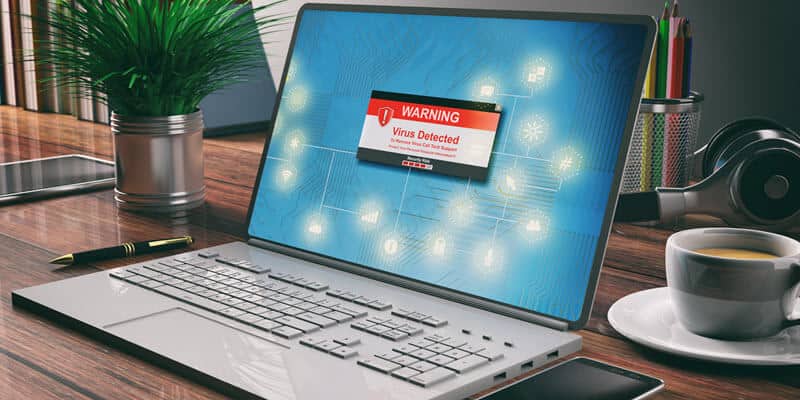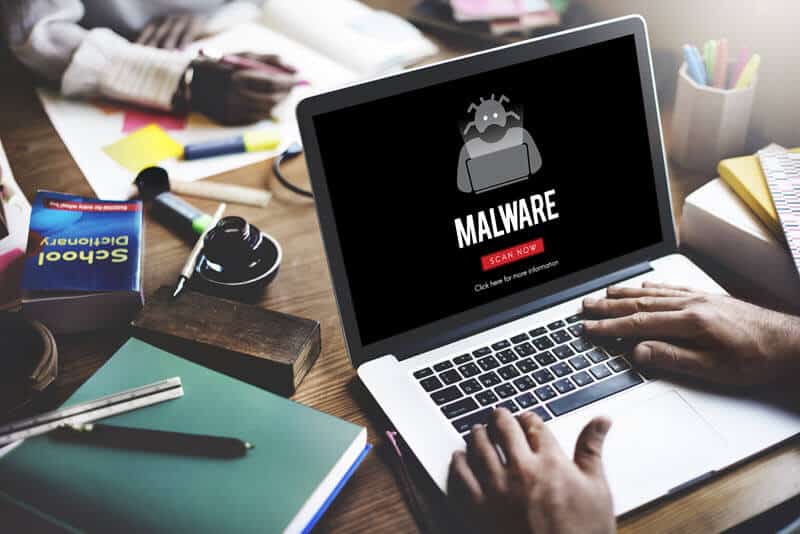Disclaimer: This post may contain affiliate links, meaning we get a small commission if you make a purchase through our links, at no cost to you. For more information, please visit our Disclaimer Page.
If you’re reading this you have probably encountered the error code ‘The requested resource is in use’. You’re probably very annoyed because all you want to do is delete an application, or run a system scan.
Firstly, good for you. Running regular system scans are a very responsible way to ensure that your PC or Mac is at its peak performance.
So what’s happening here?
The Requested Resource is in Use error is connected to what is called in the software world as: a trojan. Since the cunning sneak attack executed by the Ancient Greeks, the word trojan has been used synonymously with ‘surprise attack’.
Related Reading: Windows Can’t Communicate With The Device Or Resource Error – 5 Easy Fixes
Table of Contents
What is a trojan?
In simple terms, a trojan virus is disguised as something else, when it’s really here to wreak havoc on your system. In this case, the error reads like a legitimate update on your system, and you look for clues.
What could the resource be in use with? You might even run a scan of running systems. But you will find nothing. Because it is all a diversion.
Trojans are used by hackers — oftentimes the thieves of the internet — to enter your system and steal either data or even sometimes your personal information. I can’t stress this enough: we don’t want that.
A lot of the time trojans are nicely designed and present themselves as legitimate software. It’s very possible you unwittingly installed it yourself.
How to Get Around It
Defense Strategy 1: Disable Preview Pane
Windows 10 has an option called preview pane. Like most extra software it’s there to ensure everything is as you intended, but can be overzealous.
All you have to do in this case is the following:
- Go to File Explorer
- Switch to ‘View’ tab, in Menu
- Navigate to the ‘Panes’ section and deselect ‘Preview Pane’.
That’s your first stop. If problems persist, read on.
Defense Strategy 2: Windows Defender
Windows comes with a built-in scan system called Windows Defender. Rather than hunting for all the loose strings of your malware, you can run Windows Defender and it will get rid of it all for you in one fell swoop.
- Go to “Settings” > “Update & Security” > “Windows Security”.
- Hit “Virus & threat protection”.
- In the “Threat history” section, click “Scan now” to scan for the nasty virus lurking in your computer.
Defense Strategy 3. Hunt Down Imposters
- Click the “Start” button and type System.
- In the pop-up, hit “System Configuration”.
- Navigate to the “Startup” tab and hit “Open Task Manager”.
- If you see something with publisher marked as “Unknown” those shady guys are usually responsible for your issues. Click “Disable”.
Tip: Legitimate software does not hide its publisher — if anything it screams its name for marketing purposes.
Read Article: Windows Can’t Communicate With The Device Or Resource Error – 5 Easy Fixes
Is Malware Just a Fancy Word for Virus?
Although we have become accustomed to calling any bug infecting our computer system a virus, the actual umbrella term is Malware. Malware covers a whole spectrum of issues that could infect your operating system.
And they are:
Virus: Called so as it’s highly contagious. It’s a piece of code that spreads from software to software once it’s initially got its claws in your system.
It’s most commonly spread when software is spread between the system.
Adware: Adware isn’t the worst thing ever, but it’s not great. It’s also known as advertising support.
Basically, if you love pop-ups, this is the malware for you.
What it does is it gets into your system and tracks your sites to better understand what ads to send you. It could be responsible for the ads that pop up that you’ve never even told anyone you were thinking about before.
Aside from being irritating, the extra traffic can slow down your PC. Not identity theft bad, but not great.
Spyware: Speaking of identity theft… Spyware is what they call malicious software, it wants to do real damage. It allows hackers’ eyes into your system. They can track your activities as well as gain access to personal information.
Worms: Worm malware turns your files into compost. It goes through your system and eats up files and data.
Ransomware: Just as it sounds, ransomware holds your systems hostage until you pay a fee. This is an easy one to detect because none of your systems should be charging you for access.
This is not an arcade. Even if a warning comes up telling you you have been locked out, do not pay anything, do not negotiate with terrorists.
Trojan: You’re an expert.
How to Protect Against Trojans and Other Malware
1. Regularly Update Your Operating System:
By regularly updating your Operating System you give your PC the best chance of identifying malware and virus’. Think of it as shots for your computer.
The prevention is constantly being worked on, so why risk the disease?
2. Anti-Virus Software
Get yourself some top-notch anti-virus software. Be careful! The free stuff is often a virus itself.
Between a well-updated PC and top anti-virus, a trojan will just look like a wooden horse full of people, and no one falls for that trap twice.
3. Be Aware
When purchasing your anti-virus software know what you’re looking for. Be on the lookout for software that can also scan email and downloaded files, as well as full-disk files.
Additionally, you want to make sure your anti-virus program has the capability to scan e-mail and files as they are downloaded from the Internet, and you also need to run full disk scans periodically. This way problems can be tackled as they arise, however they arise.
4. Use a Firewall
What’s a firewall? It’s a system that locks out unauthorized users from your computer. It can be hardware or software.
Of course, the hardware firewalls are stronger against outside users, but when it comes to trojans, software definitely does the trick and can actually be stronger. You can get them alone, or as part of your router.


